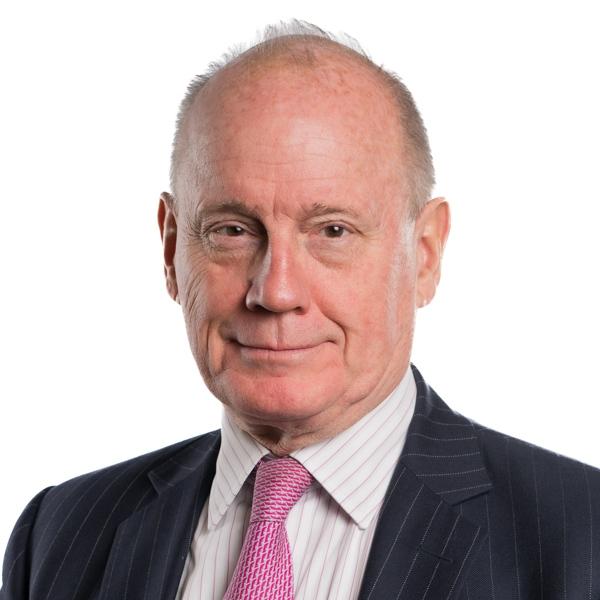If you were to ask the average citizen or business executive about 5G, they would probably tell you it’s been rolled out across most developed markets and making money. But this is not the case: deployment tends to be partial and patchy, and telcos are yet to see return on investment on the hundreds of billions of dollars that have been invested globally.
In compiling this year’s edition of our 5G report, we spoke to legal and technology experts in over 50 markets to learn the true state of last-generation roll-outs across the world. We asked which technology companies are offering, whether consumers and industry can access it, whether it’s being monetised, where regulation stands, which spectrum is being used and how it’s being auctioned, how networks are being shared, whether network-specific cybersecurity measures are in place, and what each country’s positions are on Chinese network equipment.
North America had the highest 5G penetration (41%) as of the end of 2022, according to Ericsson’s June 2023 Mobility Report. Behind that region were North East Asia (30%), the Gulf Cooperation Council (18%) and Western Europe (13%). By December, the vendor predicts that there will be 1.5 billion 5G subscriptions globally.
In terms of number of 5G subscriptions, China is in the lead, with more than 60% of the world’s total (644m, versus 417m outside the country) as of the end of 2022.
Other markets are home to technical quirks that are delaying 5G. In The Netherlands, for example, the 3.5 GHz band is not yet commercially available because NATO is operating a satellite 'listening station' with Inmarsat using the 3.4 and 3.8 GHz bands, and Inmarsat is using the 3.5GHz satellite traffic band to provide emergency communications to ships and aircrafts.
The US and Canada dealt with interference between air traffic control systems and consumer 5G by setting up exclusion zones around airports.
Spectrum rights - award and duration
Spectrum rights have tended to cost far less than they did for 3G and 4G, because governments have recognised that high licence prices may have hampered investment.
They are mainly awarded via tender or public auction, though in China, 5G licences are assigned directly to the four main telcos (China Mobile, China Unicom, China Telecom and China Broadnet).
The duration varies across markets, from 15 (eg France) to 30 years (Chile) - often with five-year extensions.
Network and spectrum sharing agreements
Network sharing agreements are already a priority in large countries with vast swathes of low population density regions that are expensive to connect. The US, like Africa before it, is seeing mobile as more efficient in rural areas than fixed-line (in this case fibre), which takes longer and is more expensive to deploy. T-Mobile, Verizon, and AT&T are offering separate Fixed Wireless Access (FWA) 5G services they hope will replace wired internet access in those areas. According to Ericsson1, by 2028 more than 25% of global mobile data traffic will be through FWA, part of it with passive network sharing.
In Australia, some state governments have proposed funding active network sharing initiatives in areas with low population density. For example, New South Wales’ Gig State programme includes a trial to fund the design and build of Multi-Operator Core Networks (MOCN), which enable active sharing between carriers. In the US, T-Mobile as part of its agreement to acquire Sprint, had to offer 5G network access to Dish, in a deal lasting until 2027.
Standalone vs non-standalone
As of January 2023, there were 229 commercial 5G networks, according to the GSMA. But in most countries, the majority of services sold as 5G are in fact non-standalone (NSA), meaning that the radio access network (RAN) is 5G, but the core network remains 4G.
The Global Suppliers Association (GSA) says that 36 operators in 21 countries and territories have launched public standalone networks, while 111 operators in 52 countries are running trials, planned or actual deployments.
In the meantime, the GSMA is forecasting that of the new 5G networks deployed in 2023, 15 will be standalone (SA). It noted that some operators have blamed the limited number of mobile devices that support standalone as a reason for delaying deployment.
A notable exception is Singapore, whose telcos now all provide at least 50% outdoor coverage using standalone networks, with Singtel hitting 95% as of July 2022.
Monetisation - consumer vs industrial
Experts in almost all markets noted that telecom operators are yet to monetise 5G, especially in the consumer segment, where prices have remained the same as 4G. In Sweden, however, Telenor Sverige and Telia Sverige buck the trend, but offer enhanced benefits such as insurance, streaming services or more/unlimited data. Tele2 Sverige and Hi3G Access, for their part, have stopped offering new 4G subscriptions altogether. In Europe and Asia, the industrial segment is showing more promise thanks in part to government subsidies, though more time is needed to demonstrate use cases.
Industrial 5G
In most countries, it is telcos that are setting up industrial 5G, enabling private networks that connect specific areas such as factories and campuses. But starting this year, industrial companies in Sweden can apply directly for local licences to use radio transmitters in the 3.7 GHz and 26 GHz bands, enabling coverage in mines, harbours and hospitals. This year, the Spanish government announced it would reserve part of the 26 GHz band for direct award to industrial players, without the need for intermediation by telcos. The German Federal Network Agency has already allocated frequencies in the 3.7 to 3.8 GHz and 26 GHz bands for local 5G, meaning that more than 140 companies are now able to operate their own local networks.
Network slicing, which enables multiple virtual networks to sit on top of a shared physical infrastructure, represents another way to offer differentiated services to enterprise clients across industries - though it requires SA 5G. However, because slicing uses software and virtualisation, telcos will both compete and partner with cloud providers. According to the GSMA, operators outside China have so far shown limited interest in slicing deployments due to concerns about return on investment.
China
The tech decoupling between the US and China has left other countries caught in the middle when it comes to selecting which companies will provide network equipment. Many European governments have signed up to the US ‘Clean Network’ initiative, with Portugal in May becoming the latest to show signs it will ban “high risk” vendors. Some countries like Brazil, Mexico and Turkey are remaining neutral, while others such as Bulgaria and Angola are entering into explicit partnerships with high risk vendors.
In June, the Financial Times reported that the European Union was considering banning all member states from using equipment from companies that might present a security risk to 5G networks. Thierry Breton, Commissioner for Internal Markets, told telecom ministers he was disappointed that only one third of member states had banned high risk vendors from “critical parts” of 5G infrastructure, which risked “exposing the union’s collective security.” Germany was named as a key outlier.
Conclusion
By and large, most countries covered in the survey appear committed to launching 5G, but progress has been slower than hoped due to factors including Covid, regulatory delays, and high costs for operators whose investors want to see return on investment. Governments appear to be trying to ease the way by lowering spectrum costs and removing some red tape, while telcos generally aren’t charging customers more for 5G than 4G. As roll-outs continue, and providers upgrade core networks to proper 5G, it is likely that telcos will continue the trend towards seeking outside investment by selling off infrastructure and sharing networks.
The GSMA estimates that there are 400 million people who lack access to mobile broadband. Looking ahead, it is unclear how the expected launch of mobile satellite services (MSS) by the likes of Starlink, Kuiper, Vodafone+AST Space Mobile, and Orange+OneWeb will impact the deployment and profitability of the 5G networks in less populated areas. It is possible that 5G operators could face hurdles to monetising rural networks, which are part of their coverage obligations, depending on the level of competition from MSS service providers.
Based on our conversations with clients, we see 5G as an example of a long-term investment subject to the short-term technological and commercial landscape and other challenges. In future, there will be a range of competing technologies: optical fibre, Wi-Fi7 and SA 5G (with network slicing) in populated areas, and a mixture of SA 5G, FWA and satellite mobile services in rural areas.
All of them will serve both humans - and increasingly, IoT.
SA 5G will become not just a way for individuals to communicate, but an environment for digital ecosystems housed in different network slices.
In all scenarios, these technologies will have to co-exist and cooperate, providing the fullest service to the client - now, and as we head towards 6G.
1 Ericsson: https://www.ericsson.com/en/reports-and-papers/mobility-report/dataforecasts/mobile-traffic-forecast?gclid=EAIaIQobChMI5Y-qzby-_wIVQwgGAB3ZyAOVEAAYASAAEgI08PD_BwE&gclsrc=aw.ds
See also https://www.ericsson.com/4a9aa7/assets/local/cases/customer-cases/2022/uscellular-bridging-digital-divide.pdf.







Social Media cookies collect information about you sharing information from our website via social media tools, or analytics to understand your browsing between social media tools or our Social Media campaigns and our own websites. We do this to optimise the mix of channels to provide you with our content. Details concerning the tools in use are in our privacy policy.